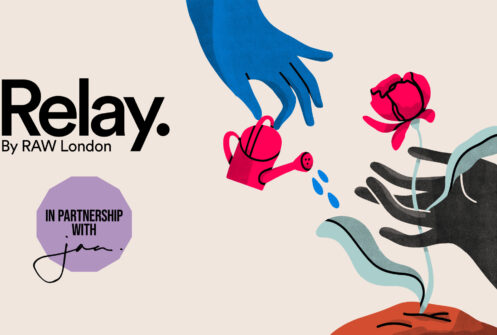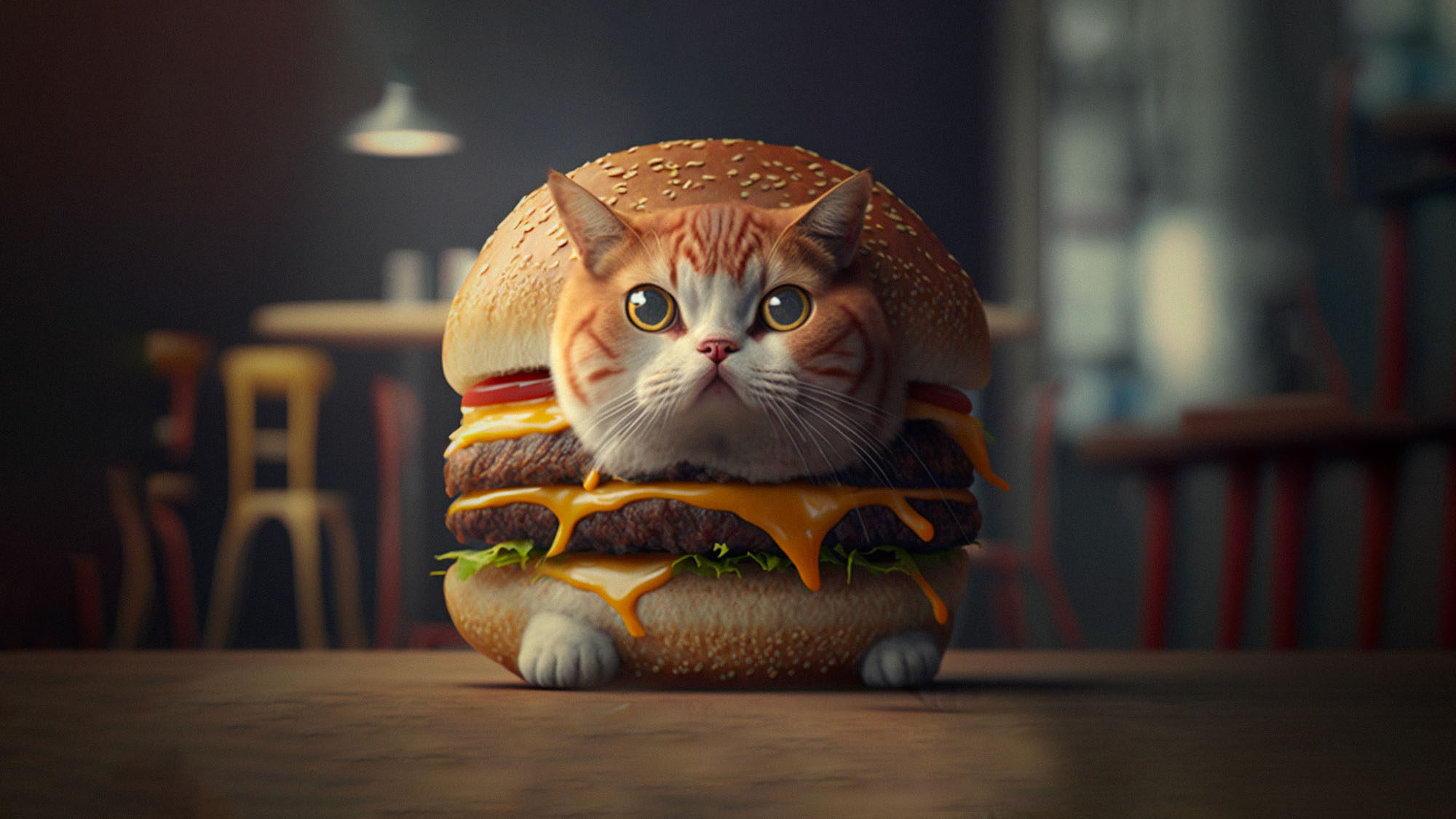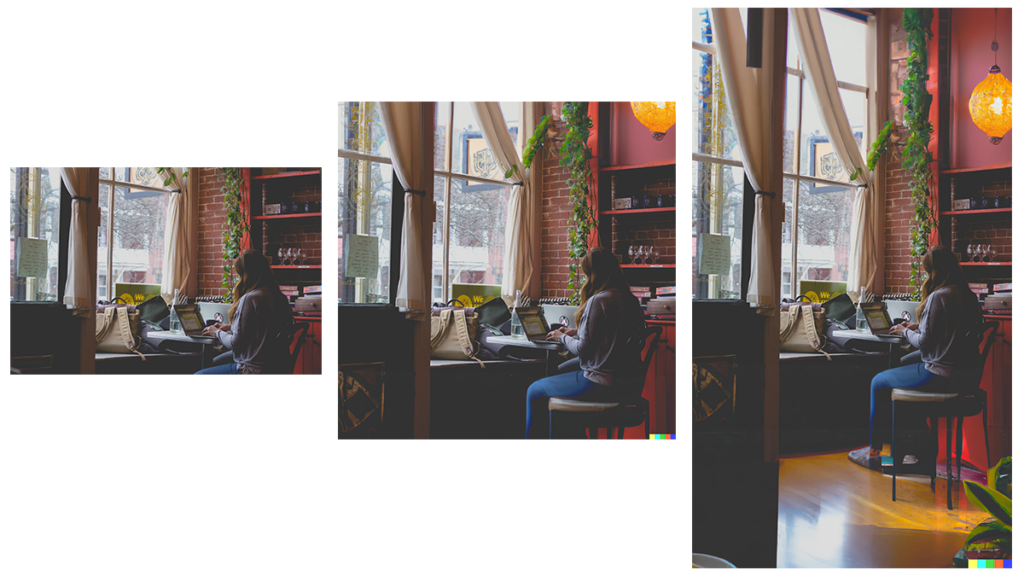

Thanks to AI, we now know the answer to “What would a cat made of burgers look like?” and “What if my dog was an astronaut?”.
In fact, AI systems have been a part of our lives for nearly a year now, and we’ve seen them be used for some really important (and sometimes less important) things.
As the Art Director here at Raw London, I think it’s amazing. These incredible advancements in technology make it easier than ever for brands, marketers and content creators to digitally alter photos with just a few clicks (or phrases). And let’s be honest, it’s so much fun.
But with this ease of access, I’ve come to realise that there are some important ethical questions too – especially for the charity sector.
AI is helping fundraising in many ways, from improving targeting through machine learning and algorithms, to engaging supporters and encouraging giving through voice assistants and chatbots.
But in an industry where honesty and authenticity are highly valued, where is the line when it comes to using AI-generated creative? For example;
While it may be tempting to use AI for these purposes, for me it also raises questions about the authenticity of the image and the message it conveys. Now, you might argue that this was of course true before with designers using tools like Photoshop, and you’d be right. But now that the effort required to create these images is trivial – the prevalence has skyrocketed. And, as more people adopt these tools, that will only increase.
Is that something we want to happen in the charity sector? Will this help us build trust with our audiences, or only complicate our ability to do so?
My major concern with AI-generated images is their potential to be misleading. With the ability to generate lifelike and very convincing images, it’s easier than ever to spread false information and manipulate public opinion. This can have harmful consequences for individuals and communities, and raises important ethical questions about what we consider real and truthful in our visual media.
Another potential challenge of using AI to create content is that it can perpetuate harmful biases. In fact, AI algorithms rely on the data they are trained on, and if this data contains biased information, the AI may generate biased content as well. We mustn’t forget that humans are involved in the labelling of these datasets and humans think differently.
The below photo could use about 5% more headroom. Could I use AI to create that new space? Yes. Should I? Maybe. How about 10%? Maybe. How about 50%? Maybe not.
Or maybe. What do you think?

Intuitively, while convenient, you could think of examples where this might feel like an overstep of an authenticity boundary but then, I’ve certainly used stock images and actors in the past, particularly where filming a real person wasn’t practical or for safeguarding reasons.
So why does using AI feel different?
For me, it’s the fact that the time it takes to perform a photoshop job has decreased from hours to mere moments, reducing the time for reflection and consideration on the ethical implications of the alteration.
The “wait, is this actually ok?” time has disappeared. This can lead to thoughtless modifications that can change the meaning of the original photo, potentially causing harm. Some applications of good judgment will be obvious, but some will not. Thoughtless creation might not seem much like creation at all, but thoughtless alterations can be dangerous. This is why we can’t have nice things.
Time, of course, is the main winner here. Can’t wrap your head around an idea? Need a ton of new variations? AI’s got you covered quicker than just about anything else out there. Just have a plan and watch AI turn it into something annoyingly good. It’s a pro at handling abstract stuff, so it’s the ultimate tool for idea-generating sessions. Once you know which way your strategy is pointing you, AI can be a really adaptable (and quick!) tool to widen your creative horizons.
The rise of other AI technologies, such as ChatGPT, have also made it possible to quickly generate written content. The same ethical considerations apply to this use of AI in the charity sector, too. For example, let’s see it an action…
“Hey, AI! Can you write me a 75 word article on loneliness in teenagers?”
“Sure!”
Loneliness is a growing concern among teenagers as they navigate through their formative years. It can have a negative impact on their mental and emotional well-being, leading to feelings of sadness, anxiety and depression. The rise of social media and screen time has been linked to increased feelings of isolation and disconnection among young people. It’s important for parents and teachers to encourage face-to-face communication, create opportunities for social interaction and help teenagers find healthy ways to cope with loneliness. Seeking support from a trusted adult, participating in community activities, and engaging in self-care practices can help alleviate feelings of loneliness and promote positive mental health.
Change of heart?
“Thanks! But I’ve changed my mind. Can you write a 75 word article on why teenagers are the least lonely age group?”
“Sure!”
Contrary to popular belief, teenagers are actually the least lonely age group. Studies have shown that teenage years are a time of increased social connectedness and a decrease in feelings of loneliness. Adolescents form strong bonds with peers, engage in more social activities and are less isolated than older adults. This age group is also more likely to seek support from friends and family when feeling lonely. Furthermore, technology has made it easier for teenagers to connect with others and maintain relationships, reducing the likelihood of loneliness. While all ages can experience loneliness, teenagers are generally less susceptible to this feeling, making it a crucial time for social and emotional growth and development.
Authenticity and honesty – AI algorithms lack both of these traits. So, should you be using AI to alter your images, or write your fundraising content, posts or press releases? I’m not sure. Instead, maybe we should instead be asking; yes, AI can save me time in production, but can I invest that time into thoughtful consideration instead?
Just a thought.
Oh, and by the way, I used ChatGPT to write 80% of this article. Can you tell?
If you’d like try to out some of these tools yourself here are a few places to start –
https://www.midjourney.com/
https://openai.com/dall-e-2/
https://openai.com/blog/chatgpt/
Tom is a multi-award winning Art Director with an impressive background in motion graphics, filmmaking and design. In his 8 years+ at Raw London, his purpose-led work has won over 30 awards at international industry schemes such as Cannes Corporate Media & TV Awards, The Drum Social Purpose Awards and Marketing Week.
Some of his projects include War Child UK, Macmillan Cancer Support, Whale and Dolphin Conservation, Northumberland Domestic Abuse Services and more.
Want to say hi? Email tom@raw.london

Definitely a portrait of myself painted by a famous master and not AI.